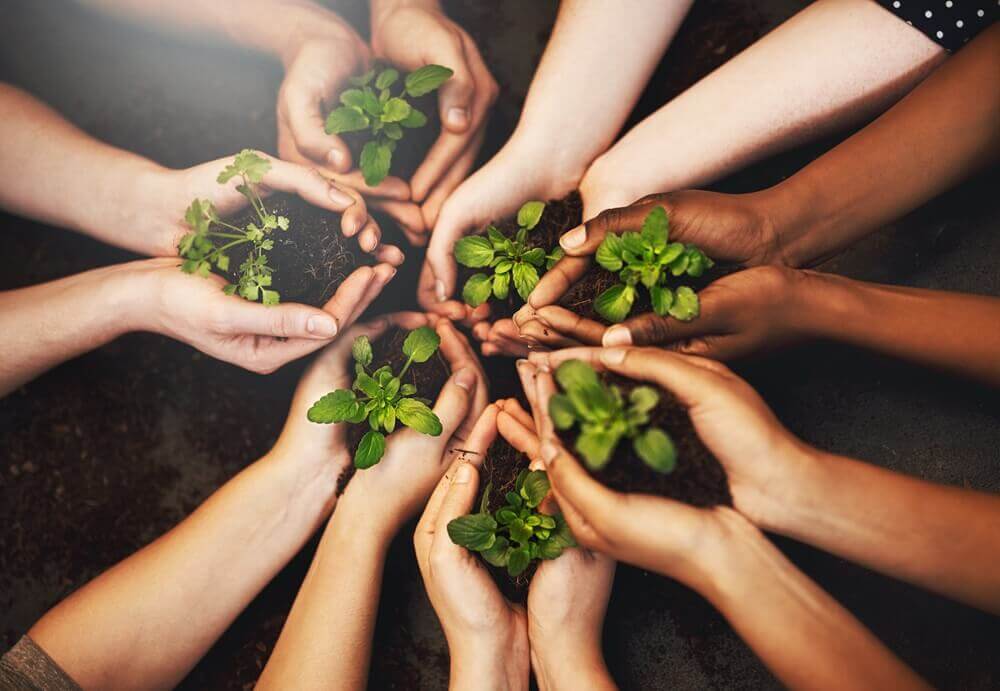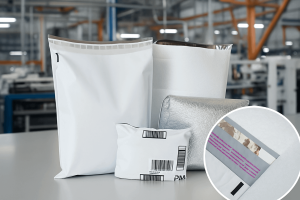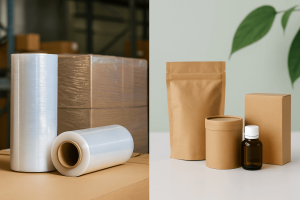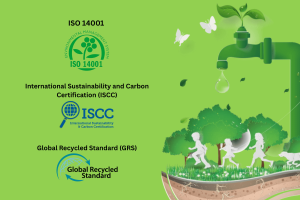
Sustainable packaging has become a major focus as industries aim to reduce environmental impact. Among the many eco-friendly options available, two usually stand out: biodegradable packaging and recyclable packaging. While both are better for the environment than traditional packaging, they differ significantly in terms of composition, environmental benefits, and usability.
In this article, we will explore the key differences between biodegradable and recyclable packaging to help you make informed decisions on the most suitable choice for your needs.
What Is Biodegradable Packaging?
Biodegradable packaging refers to materials that can naturally decompose in a short period, typically due to the action of microorganisms. These materials break down into natural elements like water, carbon dioxide, and organic matter, posing minimal harm to the environment.
👉 Materials Used in Biodegradable Packaging
Common materials used in biodegradable packaging include plant-based polymers, paper, and certain bioplastics. These materials are often derived from renewable sources such as cornstarch, sugarcane, or cellulose, making them less reliant on petroleum-based plastics. The ability to break down quickly and leave no toxic residues makes biodegradable packaging an appealing option for companies looking to minimize their environmental footprint.
👉 Environmental Impact of Biodegradable Packaging
One of the main advantages of biodegradable packaging is that it reduces landfill waste. Since these materials decompose naturally, they help lower the overall amount of waste sitting in landfills for decades or even centuries. This can significantly reduce the burden on waste management systems and decrease methane emissions, a potent greenhouse gas produced from organic matter decomposition in landfills.
However, biodegradable packaging is not without limitations. It requires specific environmental conditions to decompose properly. For example, some bioplastics only break down in industrial composting facilities with controlled temperatures and humidity levels. When disposed of incorrectly, biodegradable materials may not decompose as expected, potentially contributing to the same problems as traditional plastic packaging.
About Recyclable Packaging
Recyclable packaging refers to materials that can be collected, processed, and turned into new products, reducing the need for virgin materials. This process involves cleaning, sorting, and repurposing waste materials, transforming them into new items that can re-enter the manufacturing cycle.
👉 Materials Used in Recyclable Packaging
Materials commonly used in recyclable packaging include glass, aluminum, cardboard, and certain types of plastic like PET (Polyethylene Terephthalate). Unlike biodegradable packaging, which decomposes naturally, recyclable materials require specialized facilities to process and remanufacture them into new products. However, this recycling process conserves natural resources and reduces energy consumption compared to producing new materials from scratch.
👉Environmental Impact of Recyclable Packaging
Recyclable packaging plays an important role in reducing resource depletion. By reusing materials, it helps conserve raw materials like oil, trees, and metals. Additionally, recycling processes often use less energy compared to manufacturing new products, which can lower carbon emissions. For instance, recycling aluminum saves up to 95% of the energy required to produce new aluminum from raw materials.
However, not all recyclable materials are equal in terms of sustainability. Some plastics can only be recycled a limited number of times before they degrade in quality and are no longer suitable for use. Furthermore, contaminated or improperly sorted recyclable materials may end up in landfills, reducing the environmental benefits of recycling. Consumer education and proper disposal practices are a must to maximizing the effectiveness of recyclable packaging.
Comparison: Biodegradable and Recyclable Packaging
While both biodegradable and recyclable packaging contribute to sustainable packaging, their benefits and limitations vary. A closer comparison can help clarify which option might be more suitable in different contexts.
1. Decomposition vs. Repurposing
The primary difference between biodegradable and recyclable packaging lies in what happens to the material after disposal. Biodegradable packaging is designed to break down naturally, leaving no harmful residue. Recyclable packaging, on the other hand, is meant to be collected, processed, and reused in the production of new products.
This difference highlights the unique approaches each type of packaging takes towards sustainability. Biodegradable packaging focuses on reducing waste through decomposition, while recyclable packaging emphasizes the reuse of materials to minimize resource consumption.
2. Disposal and Processing Requirements
Another key difference between the two types of sustainable packaging is the disposal and processing requirements. Biodegradable packaging often requires specific environmental conditions, such as composting facilities, to break down efficiently. If biodegradable packaging ends up in a landfill or is disposed of incorrectly, it may take significantly longer to decompose.
Recyclable packaging, in contrast, requires specialized recycling centres to process materials. While more infrastructure is available for recycling, it is still limited in some areas, especially when it comes to certain types of plastics. Contamination of recyclable materials also presents challenges, as improperly sorted items may reduce the efficiency of recycling programs.
3. Energy and Resource Conservation
Both types of packaging offer benefits in terms of resource conservation, but they achieve this in different ways. Biodegradable packaging, particularly when made from renewable sources, can reduce dependence on fossil fuels and decrease the need for synthetic chemicals.
Recyclable packaging saves energy and raw materials by reusing existing resources, but it requires an efficient and effective recycling system to achieve these benefits. When recycling processes are well-managed, they can drastically cut down the need for new materials, especially in industries where items like glass, metals, and certain plastics can be recycled multiple times.
Which Is More Sustainable?
Determining which type of packaging is more sustainable depends on numerous factors, including the specific material, end-of-life disposal options, and the industry. Both biodegradable and recyclable packaging have their place in a sustainable packaging strategy, but neither is a perfect solution in every situation.
Biodegradable packaging may be ideal for products with a short shelf life or industries where disposal in natural environments is likely, such as agriculture. On the other hand, recyclable packaging might be better suited for long-lasting items, packaging that can be easily collected, or areas with good recycling infrastructure.
In Summary
When it comes to sustainable packaging, both biodegradable and recyclable options offer important benefits. Biodegradable packaging excels in reducing waste through natural decomposition, making it a good option in specific settings. Recyclable packaging helps conserve resources and reduce energy consumption through the reuse of materials.
Each type of packaging serves different needs, and choosing between them depends on factors like material availability, disposal infrastructure, and the environmental goals of the company. All in all, the use of both biodegradable and recyclable packaging are equally important toward a more sustainable future.
Thong Guan’s Innovative Approach to Sustainable Packaging
Maxstretch Regen by Thong Guan provides an impactful solution to packaging waste, incorporating 30% post-consumer recycled (PCR) content to support resource conservation and drive sustainable practices. Moreover, our “RE:DO” program further complements this by enabling users to recycle used films, boosting a circular economy and adding value to materials that would otherwise go to waste.
Through the “Live Green” initiative, Thong Guan adopts eco-conscious innovation, using green PE resins from renewable feedstocks to ensure environmentally friendly options without sacrificing performance. We at Thong Guan take pride in our holistic approach that prioritizes recycling, material efficiency, and sustainability—an innovative commitment to greener packaging solutions beyond conventional biodegradable options.





